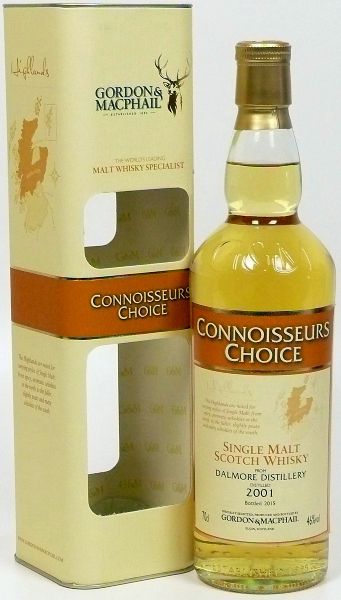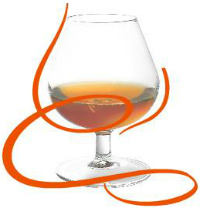So here’s Dalmore. Dalmore isn’t a Whisky I have many bottles of, if any. It was also a long time ago Dalmore’s were featured on these pages. This is now the third review, after the two reviews I did back in 2014. Obviously one from the distillery itself, the 12yo from around 2004 (so also a while back) and one 11yo independent offering from Kintra Whisky from The Netherlands. Both a bit under my radar to be honest, not spurring a lot of interest in buying more Dalmore’s, (which I didn’t). Dalmore also seems known for some affordable middle-of-the-road bottles, as well as quite some super rare, super premium, super old bottlings, giving Macallan a run for its money. How odd. After all those years, yet another Dalmore managed to emerged on top of the heap of samples. After many of my own bottles, here is sample for a change. As often happens with distilleries and their owners, they tend to change hands more often than they used to back in the day. In the year of both other Dalmore reviews, namely 2014, the company that holds Dalmore, Whyte and Mackay, was bought by Philippines’ largest liquor company called Emperador. Just to refresh your memory, Whyte and Mackay doesn’t only operate Dalmore distillery, but also in their portfolio are: Fettercairn, Tamnavulin, Jura and Invergordon (grain).
 Color: White Wine.
Color: White Wine.
Nose: Fruity and Malty, with a tiny hint of smoke in the back. When freshly poured this is big on fruit, candied fruit, but a lot of this is just blown away rather quickly. Smells of toffee, caramel and apple, caramelized apple to be precise, but also fresh apple flesh and hints of apple skin. Warm cookie dough. Apple pie, but most definitely without the cinnamon, no cinnamon in this apple pie whatsoever. Fresh air and an even sharper breath of air, probably because of the smoky note this Whisky has. Maybe this comes from the toasted oak. Not sure right now. The Malty notes are getting more of a say and seem to introduce some more waxy notes, like the wax from the skin a red apple. With this waxy note comes the promise of some bitterness in the taste, we’ll see if that is the case here. By now, more wood as well. Sawdust from plywood. Dusty altogether. Hints of lemon peel and some remarkable horseradish notes, I didn’t expect here. Smells like a modern Whisky, although tasted blind, I wouldn’t have been surprised if this was coming from some sort of refill Sherry cask (as well). For me this doesn’t have (only) the classic refill Bourbon notes we all know so well by now. No, this one has something else as well, something I also picked up on in the Dalmore 12yo, being different from others.
Taste: Soft, spicy, slightly woody and creamy. Sugar water. Wood, paper and a nice sweet chewiness. Waxy and indeed slightly bitter. Having this in your mouth makes the nose expand a bit. Not really fruity though, but it is vegetal. Highly drinkable, but not easily drinkable, it seems to have a taste profile more cut out for aficionado’s or connoisseurs. It has too much fresh oak notes and it might be a bit too bitter for the general public I guess. It’s also rather simple and thin, although it does have good balance. However, after tasting this, the nose expands, more and more is showed there. I’m wondering if this effect of the nose evolving and the taste being rather simple, comes from too much reduction of this particular example. Medium finish at best, disintegrating a bit, but the aftertaste is nice and warming, shows some of the sweetness and paper-like bitterness this Whisky possesses.
Definitely different from both other reviewed Dalmore’s, and it is not as bad as it seems. It has to be worked a bit and personally, I wouldn’t like to try this as a novice. I like the vegetal notes it shows, but it needed a very long time in my glass to show this. More than 30 minutes for sure…
Points: 85
 Color: White Wine.
Color: White Wine. Color: Pale gold, straw.
Color: Pale gold, straw. Two more to go, so alas, we are near the end of yet another Master Quill Week. As we have seen the past few days, here is another independently bottled Highland Park, this time by Douglas Laing. Near the end of the nineties, Douglas Laing started bottling single cask Single Malts, with enormous success. It may very well have been the most successful independent bottler with stellar releases, time after time. Heaps of Brora and Port Ellen come to mind. I guess back then, they were a bigger name, temporarily, than Gordon & MacPhail and maybe Signatory Vintage. If the cask had enough ooomph, the Whisky was reduced to their preferred drinking strength of 50% ABV. It is a good strength. Nobody back then complained about reduction, or that it should have been cask strength only. I loved a lot of their bottlings and bought quite a few of them. Even though the bottle itself is pretty simple, I am a sucker for Whisky in green glass (remember Laphroaig?).
Two more to go, so alas, we are near the end of yet another Master Quill Week. As we have seen the past few days, here is another independently bottled Highland Park, this time by Douglas Laing. Near the end of the nineties, Douglas Laing started bottling single cask Single Malts, with enormous success. It may very well have been the most successful independent bottler with stellar releases, time after time. Heaps of Brora and Port Ellen come to mind. I guess back then, they were a bigger name, temporarily, than Gordon & MacPhail and maybe Signatory Vintage. If the cask had enough ooomph, the Whisky was reduced to their preferred drinking strength of 50% ABV. It is a good strength. Nobody back then complained about reduction, or that it should have been cask strength only. I loved a lot of their bottlings and bought quite a few of them. Even though the bottle itself is pretty simple, I am a sucker for Whisky in green glass (remember Laphroaig?). Color: White Wine.
Color: White Wine. Color: Full gold with a slight pinkish hue.
Color: Full gold with a slight pinkish hue. Day Three already of Master Quill’s Cognac Week. Today, and tomorrow, we’ll have a look at
Day Three already of Master Quill’s Cognac Week. Today, and tomorrow, we’ll have a look at  Color: Orange copper gold
Color: Orange copper gold Color: Orange gold, amber.
Color: Orange gold, amber. Color: White wine. Not too pale.
Color: White wine. Not too pale. Color: White Wine.
Color: White Wine. Color: Gold
Color: Gold